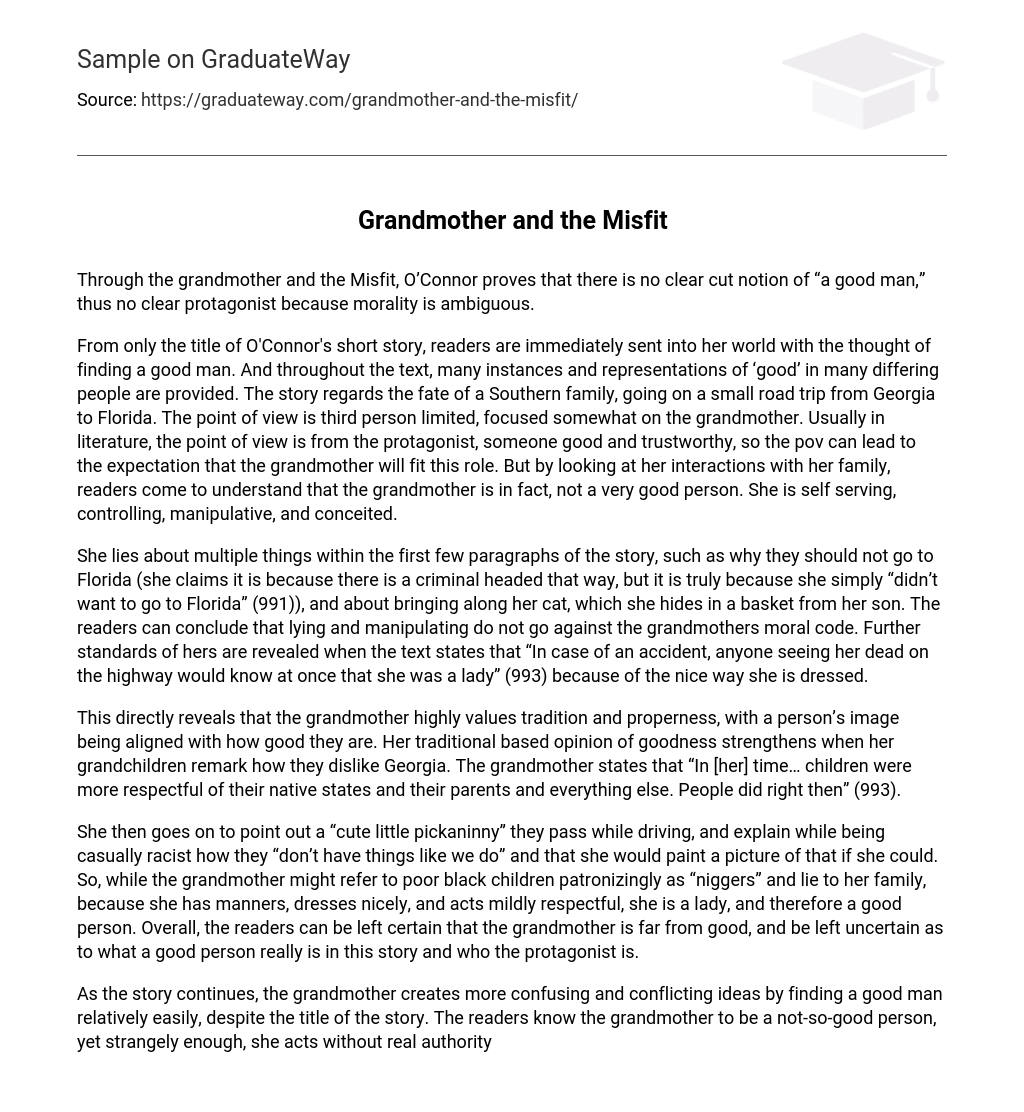Through the grandmother and the Misfit, O’Connor proves that there is no clear cut notion of “a good man,” thus no clear protagonist because morality is ambiguous.
From only the title of O’Connor’s short story, readers are immediately sent into her world with the thought of finding a good man. And throughout the text, many instances and representations of ‘good’ in many differing people are provided. The story regards the fate of a Southern family, going on a small road trip from Georgia to Florida. The point of view is third person limited, focused somewhat on the grandmother. Usually in literature, the point of view is from the protagonist, someone good and trustworthy, so the pov can lead to the expectation that the grandmother will fit this role. But by looking at her interactions with her family, readers come to understand that the grandmother is in fact, not a very good person. She is self serving, controlling, manipulative, and conceited.
She lies about multiple things within the first few paragraphs of the story, such as why they should not go to Florida (she claims it is because there is a criminal headed that way, but it is truly because she simply “didn’t want to go to Florida” (991)), and about bringing along her cat, which she hides in a basket from her son. The readers can conclude that lying and manipulating do not go against the grandmothers moral code. Further standards of hers are revealed when the text states that “In case of an accident, anyone seeing her dead on the highway would know at once that she was a lady” (993) because of the nice way she is dressed.
This directly reveals that the grandmother highly values tradition and properness, with a person’s image being aligned with how good they are. Her traditional based opinion of goodness strengthens when her grandchildren remark how they dislike Georgia. The grandmother states that “In [her] time… children were more respectful of their native states and their parents and everything else. People did right then” (993).
She then goes on to point out a “cute little pickaninny” they pass while driving, and explain while being casually racist how they “don’t have things like we do” and that she would paint a picture of that if she could. So, while the grandmother might refer to poor black children patronizingly as “niggers” and lie to her family, because she has manners, dresses nicely, and acts mildly respectful, she is a lady, and therefore a good person. Overall, the readers can be left certain that the grandmother is far from good, and be left uncertain as to what a good person really is in this story and who the protagonist is.
As the story continues, the grandmother creates more confusing and conflicting ideas by finding a good man relatively easily, despite the title of the story. The readers know the grandmother to be a not-so-good person, yet strangely enough, she acts without real authority and labels a stranger, as a ‘good man’ simply because of one kind (or more plainly, gullible) act he told her about. The grandmother’s unaccredited claim that Red Sammy is a ‘good man’ shows that her opinion of good does not mean virtuous, kind, or anything actually moral. Instead, the grandmother deems a person ‘good’ if their ethics are similar to hers. Sammy is a good man because he, like her, trusts people based on little to nothing and agrees that times were better in the old days.





